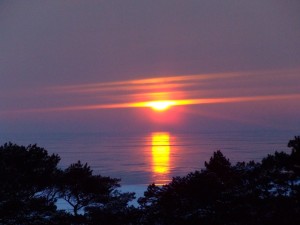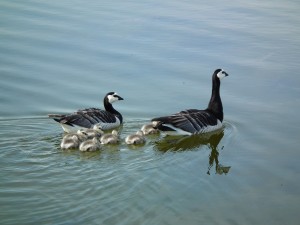Fennoscandia people
Fennoscandia people region is located north of Scandinavia.
Fennoscandia people of Lapland is defined as a geographical area of land that stretches across Norway, Sweden, and Finland.
The Sea.
On the North end, it runs up to the Barents Sea, on the West to the Norwegian Sea and on the East to the White Sea. Generally speaking an area from the West Norway all the way across to the Kola Peninsula.

The Land.
The Lapland is mostly inside the Arctic Circle. The Arctic Circle is one of the five major circles of the latitude that is on the globe map, the parallel that runs 66° 33′ 44″ north of the Equator.

The Climate.
The climate of Fennoscandia people is often harsh during the cold 6 months of the year; the vegetation is sparse, except in the densely forested southern portion. The climate has gone through many extreme changes in the past history.

The Historic changes.
There was an Ice Age over the Fennoscandia that lasted for ages and ended around 10 000 BC. After the Ice Age ended there was a large amount of fresh water that ran off the snow and ice and formed an ice lake in what today is known as the Bothnia Bay, and the Gulf of Finland. The water was trapped at the current Denmark, Sweden, and France, so the water levels are said to have risen tens of meters from the current levels, and so doing flooded much of the Finland west coast, and the shoreline went far as Rovaniemi during the 5500 AD. The Ice lake dam at the Denmark ridge did break down and the water levels dropped dramatically. The climate change from extreme cold to a warm period had an effect on the flora. What was previously a Tundra landscape became a landscape with insidious trees, birch trees grow where on the area that was covered with and ice and snow cap. At the Bothnia bay, the ice sheet was a whopping 2000 meters thick. Around 2500 BC a colder climate prevailed, and the fir trees that were a few while the birch trees flourished, the fir trees increased and became to dominate the other tree species. Today there is the taiga region with fir tree cover and the sparse birch trees. And as you further north it becomes what is commonly called Tundra, treeless hills and rounded mountains that are inhospitable where the environment don’t get enough warmth to generate suitable topsoil for the tree roots that take hold and hold out the long cold winters in hibernation.
Winter and summer Solstices
The Arctic Circle is also the south most latitude in the Northern Hemisphere at which during the Sumer solstice (June) and winter solstice (December) occurs. The experience of the midnight sun, the phenomena that the sunlight does not go out during the summer night hours, and the reverse of it is a very short dim light of a winter day. It happens because the sun position relative to the horizon, during that season, can remain continuously above or below the horizon for 24 hours.
VIDEO.
Antiquity
The antiquity finds in Lapland are a few, e.g. in Norway and Finland rock art and cave paintings, the remains of early culture villages, radiocarbon dating back some 6000 BC. There are also the remains of wild animal trap pits, and remains of stone tool making Lithic flake findings. The Stone Age in Finland varied from North to South, they are set as: 7500/7000-1500/1250 BC. The Bronze Age in Finland occurred from 1500/1250-500 BC. Iron Age occurred from 500-1150/1300 AD. The early arrivals to Lapland in Finland dated back to around 5300-5400 BC. Further, south there are findings from the ceramic period 7500-4200 BC. The Kola Peninsula is Kuolanmaa, translated meaning; “a land with plenty of fish”. There is also a traditional cultural hub village called Kuolanjärvi, on the shore of a lake called “Kuolanjärvi” (lake with plenty of fish).
Territory and Border wars.
The traditional town went through a name change in the late 30’s, the name was changed from kuolanjärvi to Salla. It is located on the east border of Finland. The land was annexed by the Soviet Union during and after the winter war 1939, and 1945. As the result of the invasion, the traditional cultural hub area is cut off from Finland. The township of Salla experienced many hardships in relocating under the winter war and repeated after the continuation war from 1941-45. A new town named after the same name that is now some 30+ km east from the current town of Salla. Kuolajärvi was a well established cultural hub for the traditional way of living for the Arctic Finland culture, pre reindeer farming that started during 1800.
Indigenous handcraft and survival skills.
In the early history, reindeer’s were used primarily for food, transport, tool making, utensils, leather straps, clothing, boots, hats, gloves, tepee tents, fish hooks and many more items. Things like eating utensils, handles, buttons for clothing, bedding blankets, carry bags, and many more creative ideas. The indigenous peoples of Lapland were also gifted in making Tandy leather bags from the skin of fish, like salmon. Once the salmon is skinned, dried in open air, and cured, the leather is worked to soften it, and then trimmed, shaped, sewn and finished off into a fine leather product like a leather shoulder bag. The indigenous peoples had developed their handcraft skills so and passed those skills to the following generations. Which some traditional handcraft is still available today in the cultural centers. Fennoscandia peoples lived more closer to the land and the natural environment than the people in the same region today, with conveniences of the modern technological age. Fennoscandian people developed their survival skills, woodworking, and shipbuilding skills over many centuries to a fine art.
Visit website http://arcticfinland.net for further reading on the Arctic region of Lapland.
